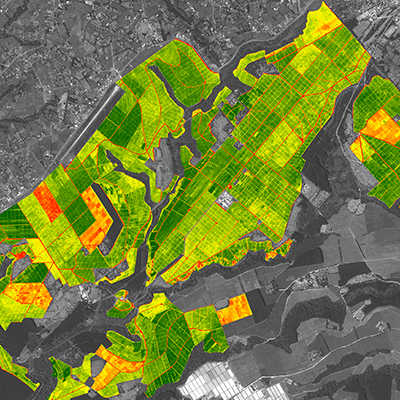Interested in learning how to manipulate Earth Observation data? The Applied Remote Sensing Group at Cranfield University will be hosting a training short course in Earth Observation (EO) data science. The course will equip you with the skills to effectively extract, manipulate, and visualise EO data for a variety of use cases. Highly rated (4.65/5) by past participants for its practical approach and beneficial impact on research and professional development, this course is an invaluable opportunity to advance your skills in the growing field of EO data science.
Earth Observation (EO) plays a vital role in a wide range of environmental research areas such as monitoring biodiversity, wildlife populations, deforestation, sea level rise, greenhouse gas emissions, glacier retreat, and changes in land use. With the growing number of EO satellite operators and advancements in computing algorithms, the importance of EO data is expected to increase in both research and in achieving sustainability, net zero, and climate targets.
EO data and automated analysis techniques are becoming increasingly important, providing researchers and practitioners with valuable datasets to tackle environmental challenges using a whole systems approach. Participants in this course will gain hands-on experience with data extraction, manipulation, and visualisation techniques, which they can apply to various uses.
The course is intended for environmental scientists and ecologists, non-profit and conservation organisations, agricultural professionals, urban planners, educators and researchers.
At a glance
-
- Dates
-
- Please enquire for course dates
- DurationFive days
- LocationCranfield campus
-
Cost
£1460
Concessions available
Course structure
The course format will include in-person lectures, hands-on PC labs, group work and participant presentations.What you will learn
After taking the course, participants will be in a position to identify and harness EO data to advance their research.
On successful completion of this course, you will be able to:
- Review types and principles of satellite EO and how electromagnetic radiation as related to satellite EO interacts with the earth’s surface and the atmosphere,
- Outline key planetary EO cloud back-ends (e.g., Google Earth Engine, Microsoft Planetary Computer, AWS) and discover their associated data catalogues including datasets from the Google Earth Engine Community,
- Use Python APIs to access Google Earth Engine and Microsoft Planetary Computer EO cloud data,
- Create and customise scripts using Python API to access and manipulate collections of EO data in Google Earth Engine,
- Extract and visualise time series of spectral indices over a given area such as vegetation, water, soil and snow indices,
- Build EO data workflows integrating data from EO cloud back-ends
Core content
- Day 1: Introduce satellite EO types and principles: including Optical, Thermal and Radar Remote Sensing,
- Day 2: Explore key EO cloud back-ends and associated data catalogues focussing on Google Earth Engine and Microsoft planetary computer. This will include hands-on sessions on data discovery using Python APIs and JupyterLab,
- Day 3: Manipulate EO data collections: hands-on sessions focussing on progressively developing a workflow on how to get image collections from a given satellite sensor, apply cloud algorithms and other processing functions, and aggregate data spatially and temporally,
- Day 4: Develop workflows to extract time series data of various spectral indices over a given area/grid cell. We will cover various indices such as vegetation, water, soil and snow indices,
- Day 5: Mini-hackathon - develop custom workflows to integrate datasets from key EO cloud platforms.
Who should attend
The course is intended for non-profit and conservation organisations, agricultural professionals, urban planners, educators and researches, environmental scientists and ecologists.
A limited number of places is available (20 places). For enquiries please email the course lead at: a.khouakhi@cranfield.ac.uk
Speakers
Dr Abdou Khouakhi
Dr Jacqueline Hannam
Dr Toby Waine
Dr Daniel Simms
With support from
Ann Holden
Ian Truckell
Concessions
20% Cranfield alumni10% On multiple bookings when booking 3 or more delegates at one time
Accommodation options and prices
This is a non-residential course. If you would like to book accommodation on campus, please contact Mitchell Hall or Cranfield Management Development Centre directly. Further information regarding our accommodation on campus can be found here.
Alternatively you may wish to make your own arrangements at a nearby hotel.
Location and travel
Cranfield University is situated in Bedfordshire close to the border with Buckinghamshire. The University is located almost midway between the towns of Bedford and Milton Keynes and is conveniently situated between junctions 13 and 14 of the M1.
London Luton, Stansted and Heathrow airports are 30, 90 and 90 minutes respectively by car, offering superb connections to and from just about anywhere in the world.
Location address
Cranfield University
College Road
Cranfield
Bedford
MK43 0AL
Read our Professional development (CPD) booking conditions.





